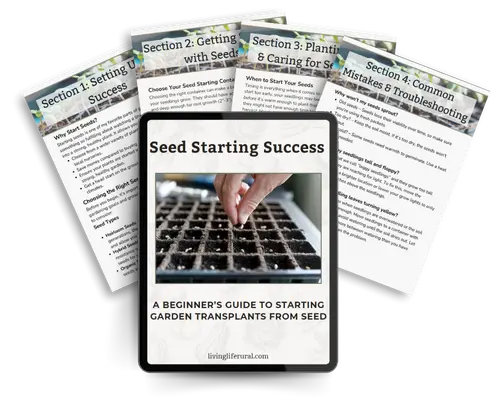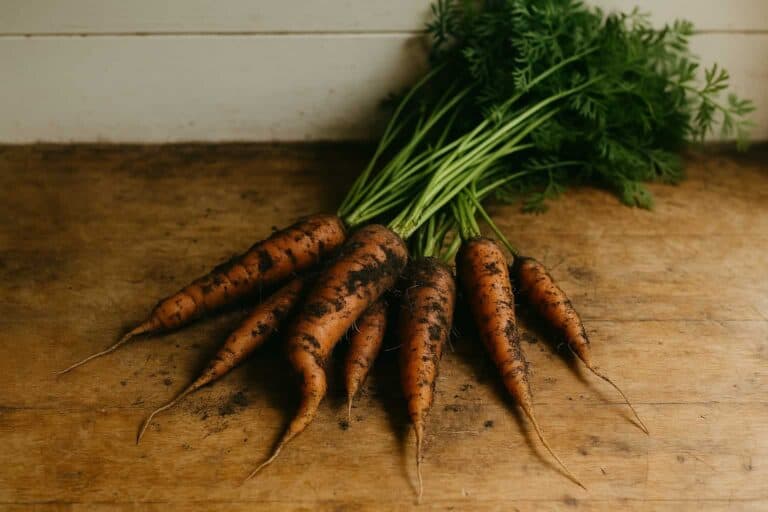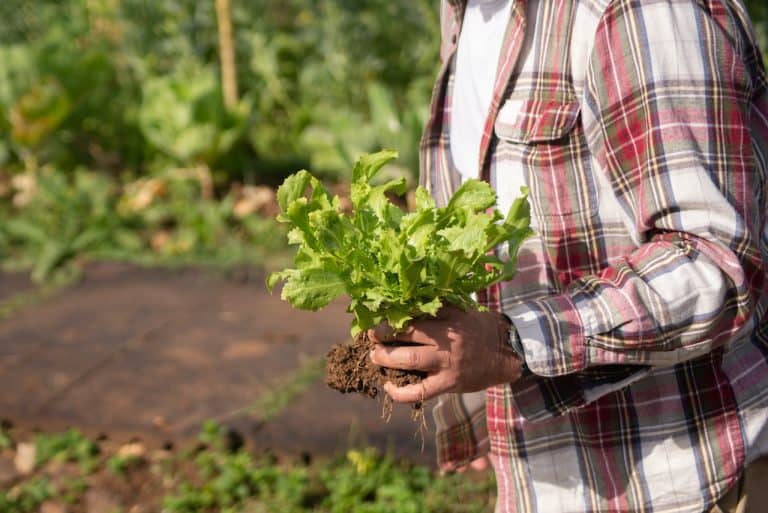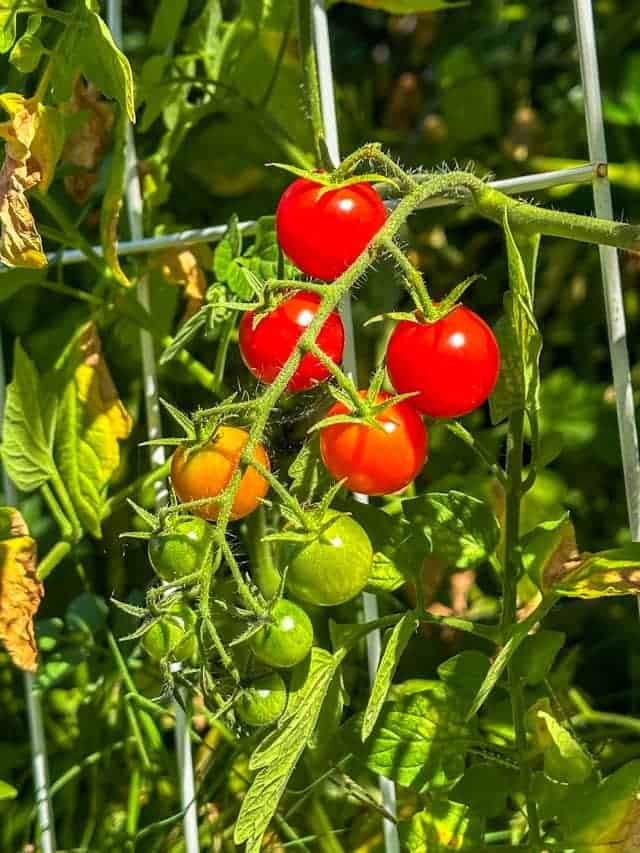If you've ever tried to grow veggies side by side and ended up with stunted plants or plants taken over by bugs, you're not alone. That's where vegetable garden companion planting steps in as a real lifesaver. The right companion plants work together underground and above, helping boost harvests, keep pests in check, and make the whole garden less of a chore.
For a long time, I ignored those little charts and planted whatever “looked good” next to each other or fit best in the garden. Did it work? Sure… sort of, lol. I had some “problems” that I couldn't explain. Like crazy bug infestations or a plant that just wouldn't grow right, even though it had just the right conditions.

Now, I look for simple companion plant pairings that give me the most benefit for the least extra work. Here’s a quick win: tuck marigolds or basil in with your tomatoes. It works, it’s easy, and your garden suddenly feels like it's got your back.
If you want a no-guesswork guide that skips the fluff and actually helps your garden thrive, keep reading. You’ll find lots of good companion plants, practical tips, and the “why” these methods work, so you can get on with growing instead of overthinking it.
How Companion Planting Works (And How It Doesn’t)
Companion planting sounds like it should be as simple as “good friends go together.” But if you’ve ever wondered why marigolds sometimes live up to the hype and sometimes flop, it’s because there’s a lot more going on, above and below ground.
Let’s break down what’s really happening in the world of vegetable garden companion planting and where the weeds of myth still hang on.
Plant Relationships: What’s Going on Above and Below the Soil?
Plants aren’t just sharing space—they’re constantly communicating and competing, trading resources, and sometimes battling quietly. Here’s what your plants are up to:
Above the Soil
- Shade and Shelter: Tall crops like corn can give climbing beans a break from intense midday sun. But if you crowd the wrong combos too close, you’ll get stunted veggies or trouble with disease instead.
- Pest Diversion: Strong-scented herbs (think basil, thyme) can distract or repel pests that target your tomatoes or lettuce, acting like an herbal “bodyguard.”
- Pollinator Attraction: Planting flowers among your veggies draws pollinators in and encourages bigger harvests, especially for squash, cucumbers, beans, and more.
Below the Soil
- Root Interactions: Deep-rooted plants (like carrots) can reach nutrients that shallow-rooted plants (like lettuce) miss, meaning less direct competition for the same resources.
- Nutrient Sharing: Some plant pairs actually trade nutrients. Classic example? Beans and peas “fix” nitrogen with their roots, leaving extra for leafy neighbor crops like spinach or cabbage.
- Mycorrhiza Magic: Many plants form partnerships with helpful fungi called mycorrhiza in the soil. These fungi help shuttle nutrients and water between plants, kind of like an underground internet for roots. Companion plants can encourage a healthy soil network or, in some not-so-friendly matches, break it apart.
- Allelopathy: Occasionally, one plant produces chemicals that slow down its neighbors. Black walnut is a notorious example, but even some garden basics can have mild allelopathic effects. That’s why not every veggie is happy next to every other veggie.
Solid Science vs. Old Wives’ Tales
Not every bit of companion planting advice holds up when you dig into the data. Here’s where old stories end and good evidence begins:
- What Works: Interplanting beans with corn (the old “Three Sisters” method) is backed up by solid research. Beans fix nitrogen, corn provides climbing support, and squash shades out weeds—a classic win-win. Similarly, adding flowers to veggie beds really does crank up pollinator visits.
- What Doesn’t Always Hold Up: Some classic match-ups (carrots with tomatoes or basil with cucumbers) are more legend than laboratory-proven. While they often don’t hurt, claims of huge yields or “pest immunity” are rarely backed by trials. You’ll find a rundown of tested pairings in guides like the Companion Planting Chart and Guide for Vegetable Gardens.
- Popular Myths:
- Certain plants “always” boost growth for others (sometimes true, often not).
- Companion planting “prevents all pests” (definitely false).
- Friendly plants “fix” every soil or climate problem (nope).
Now, I'm a firm believer that Grandma knew what she was doing. (She had to, right?) But, a good rule to follow is: Proven companion plants from history are great, but check to see if any research has put the idea to the test.
Successful vegetable garden companion planting comes down to mixing what’s proven with what works for you in your own dirt. Trial, error, and a little research will keep your garden more jungle and less jumbled.

Benefits of Companion Planting in Your Vegetable Garden
Vegetable gardening companion planting isn’t magic—it’s the natural way to create a vegetable patch that helps fight the tough jobs with you. You get fewer weeds, fewer thirsty plants, fewer bug invasions, and soil that just keeps getting better over time.
Let me show you what a difference the right plant neighbors can make in your backyard (and how you can actually spend more time watching your zucchini grow and less time battling weeds).
Less Weeding, Less Watering, and Fewer Pests
Tired of being a full-time weed wrangler and bug bouncer? Companion planting loosens your workload by packing your veggie beds smartly:
- Weed Suppression: Leafy, spreading plants like squash or nasturtiums cover ground fast, shading out those pesky weeds that love bare soil. (bindweed…. ugh!) Less light means fewer weeds—simple as that. If you hate weeding (who doesn’t?), letting your “plant squad” help do the work is seriously satisfying. Here’s more on how plant partners crowd out weeds.
- Water Conservation: A combo of tall, sun-loving veggies (like corn or tomatoes) with groundcovers beneath (such as lettuce or herbs) helps keep soil shaded and moist. Plants share what’s in the soil, and less open dirt means less evaporation—sometimes you can even stretch days between waterings during a hot spell.
- Integrated Pest Management: Strong-scented herbs (basil, dill, oregano) and flowers (like marigolds) can help mask your precious veggies from garden villains. Planting these alongside tomatoes, peppers, or squash often means fewer aphids, beetles, or hornworms nibbling your crops. Check out even more ways companion plants fight pests.
Added up, you’ll find the right mix of plants together is like kids at summer camp—busy, healthy, and less likely to cause trouble, leaving you with way less to worry about.
Grab our Free Seed Starting Succes Guide!

Enhancing Organic Gardening and Soil Health
One of the best perks of vegetable gardening companion planting is how it sets up your whole garden for better soil and fewer chemicals.
- Diversity for Better Soil: Mixing different plant families supports a broader soil ecosystem—think earthworms, beneficial bacteria, and those tiny fungi that boost root health. The less you mono-crop (plant the same thing everywhere), the more you buffer against problems.
- Natural Fertility: Peas and beans (legumes) “fix” nitrogen, putting it right back into the soil for neighboring leafy greens like kale or spinach. You feed your soil simply by growing different plants side by side.
- Pest and Disease Resistance: Many bad bugs and diseases get confused by all the variety, slowing their spread and helping you skip the sprays. Fewer chemicals mean your produce is as clean as nature intended.
- Water Retention and Organic Matter: Strong plant mixes help hold soil moisture, save your irrigation bill, and add organic matter season after season. Read why healthy soil is the backbone of any organic garden.
Starting to see healthier plants? You’re building an eco-friendly system that gets stronger every year (and gives you bragging rights with your gardening friends).
Boosting Yields and Reducing Disease in Vegetables
If you love the idea of plucking handfuls of beans while dodging fewer powdery mildew outbreaks, companion planting has your back.
- Classic Combinations for More Food: The “Three Sisters” tradition—corn, beans, and squash together—isn’t just cute folklore. Corn lifts beans up for better sunlight, beans feed corn with nitrogen, and squash blocks weeds with big leaves. This teamwork actually ups your harvest per square foot.
- Herbs with Veggies: Pair basil with tomatoes, dill with cabbage, or chives with carrots. These duos can ward off bugs, help with pollination, and sometimes make your crops taste even better.
- Disease Defense: Planting onions and garlic near carrots or beets can slow the spread of soil-borne fungi. Spacing out your crops or tucking in flowers helps break up disease cycles, too.
Keeping your veggie garden a mixed crowd means more food, fewer sick plants, and a setup that’s a lot less stress for you—kind of like having a garden that’s got its own playbook for winning all season long.

Categories of Companion Plants (So You Don’t Have to Memorize Every Pairing)
Let’s be honest—nobody really has the brain space to memorize every possible veggie-and-herb match. The good news: you don’t have to! Instead, grouping companion plants into broad categories takes the confusion out of vegetable gardening companion planting. Think in terms of helper plants, natural defenders, nutrient boosters, and those that make life easier for their neighbors. With these categories, you’ll feel more relaxed and confident digging in—just keep these “roles” in mind, and your garden will pretty much handle the rest.
Top Helper Plants Everyone Should Know
Some companion plants are like the superheroes of the veggie patch. They show up, get the job done, and look good doing it. If you only add a handful to your garden, make them these:
- Marigold: Fends off nematodes, aphids, and even rabbits. It’s the all-around bodyguard with a bright, cheerful look.
- Basil: Makes tomatoes taste even sweeter, keeps hornworms away, and doesn’t mind close quarters.
- Borage: Attracts pollinators and confuses garden pests. Bonus: those pretty blue flowers are edible (and bees love them).
- Calendula: Lures in pollinators and beneficial insects like hoverflies, which munch on aphids—the ones that usually hassle your lettuce.
- Nasturtium: Works as a “trap crop” for aphids and flea beetles, drawing them away from your veggies. Its peppery leaves and flowers are tasty in salads, too.
Just having these powerhouses woven through your rows or tucked between the tomatoes and beans means you’re off to a strong start.
Plants That Play Defense Against Pests and Critters
Why not let some plants do the pest control for you? Certain flowers and herbs act as garden security for your vegetables, stopping hungry bugs or even larger critters in their tracks. A couple of big defenders in the garden:
- Marigolds: Their roots produce chemicals that send soil pests running (well, squirming), especially nematodes that love to snack on veggie roots.
- Onions and garlic: Strong scent means most flying pests, and even some bigger mammals, steer clear of their neighbors.
- Chives: Good for keeping pesky aphids off lettuce, carrots, and tomatoes.
If you’re growing spinach, you’ll want a lineup of defenders close by. There are smart pairings for almost every vegetable—see which ones give the best results for spinach companion planting.
Nutrient Fixers, Shade Makers, and Support Crew
Some plants work behind the scenes to feed, shelter, and even prop up their neighbors—true team players. Here’s how:
- Beans (and other legumes): They “fix” nitrogen into the soil, helping leafy crops grow robust and green without extra fertilizer.
- Clover: Similar to beans, it’s a living mulch and a natural fertilizer in one, plus it smothers weeds.
- Sunflowers: They act like living trellises for pole beans or cucumbers and provide welcome afternoon shade for lettuce or spinach when the sun is intense.
- Corn: Provides natural vertical support for vining beans and helps create microclimates for ground-hugging squash.
- Oats or rye: These cover crops give loose soil and break up compaction, which neighboring veggies love.
If you want to dig into support roles for more specific crops, browse the Gardening Tips and Advice section for seasonal helpful guides.

Best Companion Plants for Popular Vegetables
Choosing the right neighbors in your vegetable gardening companion planting plan can take your garden from “just surviving” to straight-up thriving. Different veggies prefer different sidekicks, and some pairings work like peanut butter and jelly, while others are more like oil and water! Here’s how to build those winning teams and steer clear of squabbles in the garden.
Tomatoes:
Tomatoes are a bit picky when it comes to who they share their patch with. If you give them the right companions, you'll see taller plants, richer flavor, and fewer pests.
Best tomato companions:
- Basil shrugs off hornworms and sets your tomatoes up for better taste.
- Marigold roots work below the soil to chase off nematodes and whiteflies. Their scent also seems to help keep hornworms away.
- Parsley is a gentle companion that attracts beneficial hoverflies; many gardeners edge tomato beds with curly parsley for this reason.
These three bring out the best in tomatoes, making everything from soil health to bug defense run smoother.
Plants to avoid near tomatoes:
- Corn: Attracts the same pests as tomatoes, and can shade each other.
- Cabbage family: Heavy feeders, so they go head-to-head for nutrients and water and tomatoes may shade out the cabbage.
If you're planning to grow tomatoes, then check out my in-depth article on the best companion plants for tomatoes!
Peppers
These veggies are hardy but can really shine when matched with the right garden buddies.
- Basil: Helps keep aphids at bay and improves flavor
- Marjoram: Releases aromatic compounds that act as a natural insecticide.
- Oregano: Works great as a ground cover to deter pest and conserve moisture.
Avoid planting fennel near peppers as it may inhibit growth.
Beans (bush, shell, pole, lima, etc):
Beans are natural team players and get along with almost everyone. Some great pairings, though, are:
- Corn: Pole and lima beans climb right up the stalks, no trellis needed.
- Cucumbers & squash: Help shade soil, and beans boost nitrogen. Paired with corn and squash, you get the famous “three sisters” companion plant pairing.
- Nasturtiums: These act as a trap crop for aphids and beetles.
- Lovage, Sage, Rosemary: They have strong aromas and can repel beetles and other pests.
- Marigolds: Ok, so there aren't many places in the garden that you can't plant marigolds, lol. They're just so great at what they do!
One type of plant that beans don't get along well with is the onion family. They can stunt the growth of your beans.
Squash (summer or winter):
Squash loves the company of:
- Nasturtium: Deters squash bugs, aphids, and whiteflies, plus it’s edible.
- Marigold: Repels insects with their odors, can attract pollinators with their bright colors and deter nematodes.
- Buckwheat: This is often grown as a cover crop and is great around squash. It produces tons of flowers that attract parasitic wasps and other pest-eating predators, which reduces insect pressure on your squash.
Pro-tip: Squash will happily sprawl wherever it wants—use flowers and herbs at the edges for a living mulch and natural pest border.

Spinach (and other leafy greens):
Leafy greens might seem fussy, but they actually fit nicely in your garden if you pick solid companions.
Top spinach companions:
- Strawberries: Thrive in similar growing conditions and can help attract beneficial insects.
- Radishes: Loosen up the soil for quick-growing leafy green roots and love to grow in the cooler temps as well.
- Peas: Help out with soil nitrogen, so your leafy greens really thrive.
- Onions, Chives, and Garlic: These friends have lovely pungent odors that work well to help deter aphids and other pests that really want to eat your tender leafy greens.
If you want the BIG list of the best spinach companions, I keep my favorite tricks in the spinach companion planting guide—handy when you want a salad patch that basically grows itself.
Cucumbers, Melons, and Their Best Buddies
Both cucumbers and melons crave a well-supported, pest-smart approach, and good company makes all the difference!
Cucumber & melon friends:
- Nasturtium & marigold: Repel beetles, squash bugs, and aphids.
- Dill: Lures in pollinators, deters aphids and mites, and you need dill to go with those cucumbers!
- Radish: Planted early with cukes, radishes keep cucumber and flea beetles busy—and away from your pricier crops.
- Oregano and Basil: Have a strong scent to repel all those pests who want to decimate your vines.
Root Crops: Potatoes, Carrots, and Onions
Root crops are trickier, since they all compete for the same underground real estate and nutrients, but there are still plenty of great companion plants for them (just not each other, lol).
Winning root crop combos:
- Onions near carrots: Onions deter carrot flies, and carrots don’t mind the oniony company.
- Potatoes with beans and peas: These boost nitrogen for potatoes, and enjoy the moist soil from potato shade.
- Marigolds: If you haven't noticed by now, I love marigolds in the garden. They aren't a magic plant or a cure-all, but they do work a little magic.
Avoid:
- Skip planting potatoes with carrots or turnips; their aggressive roots can mess up each other’s growth and make for smaller, misshapen veggies.
- Don’t mix onions and beans—these two are known to stunt each other.
- Avoid dill or coriander near your carrots as they can cross-pollinate.
Corn, Sunflowers, and Tall Companions
Tall veggies and flowers often moonlight as garden supports (and little sun umbrellas).
- Three Sisters method: This classic—corn, beans, and squash—shows why the right trio gives everyone what they need and not much extra work for you. Beans feed the corn, corn lifts the beans, and squash covers and cools the soil, making weeds and thirsty ground less of a problem.
- You can also use melons or cucumbers in place of squash in this method as they both vine and cover the soil as well.
- Sunflowers: These big, sturdy flowers support climbing beans, act as a pollinator magnet, and can even give heat-sensitive crops like lettuce or spinach much-needed shade.

Brassicas: Broccoli, Cabbage, and More
Brassicas (think broccoli, cabbage, turnips, kale) need protection from bugs that chew, munch, and stomp through greens.
Best brassica buddies:
- Dill: Attracts parasitic wasps that attack cabbage worms.
- Nasturtium: Works as living pest trap—bugs stop here instead of moving in on your cabbage.
- Onion & garlic: Their strong scent confuses the insect invaders.
- Lettuce/carrot: These grow low and fill space, acting as a weed block and extra harvest option.
- Sage and Thyme: Give off strong scents that repel cabbage moths and whiteflies.
Want a dedicated guide for protecting turnips specifically? This article about top companion plants for turnips walks you through the best matches for bug and disease control.
Smart Companion Planting Strategies (Without Overthinking It)
Companion planting can feel like one of those “do I really need to read another chart?” parts of gardening, but trust me, it doesn’t have to be that complicated. The trick is making choices that work for you, your soil, and—most important—your sanity. Here’s how to keep it simple, practical, and as close to “set it and forget it” as gardening gets.
Simple Layouts for Any Garden Space
You don’t need acres or raised beds that look ready for a magazine shoot. Companion planting fits into whatever garden space you’ve got. Here’s how I keep layouts super simple, whether I’m working in-ground, with containers, or even tucking plants into random sunny patches.
- Compact beds: Think of your garden beds as “neighborhood blocks.” Place two or three good companion plants together. For example: tomatoes + basil + marigold. That’s flavor, pest protection, and pollinator support with almost no extra planning.
- Container combos: Use large pots or tubs to plant a leafy green, a root crop, and a shallow herb. Try lettuce + radish + chives, or carrots + onions + parsley. Easy to move around, and the combos sort out pest and nutrient needs naturally.
- Small-space pairings: Even if all you have is a patio or balcony, drop a dwarf tomato into a 5-gallon bucket, tuck a few nasturtiums or basil around its base, and call it a day.
- Row sprinkling: Instead of neat strips of single veggies, mix things up in short blocks or triangles. Beans next to cucumbers, onions beside carrots, and a marigold at the row end.
Setting up a garden that feels doable? Check out these beginner gardening tips for starting a garden layout if the thought of design is sending you into overwhelm. Honestly, whatever your setup, simplicity saves the most headaches.
Spacing Hacks and Harvest Ease
Crowded plants stress out—just like people at a packed concert. But there’s no need to obsess over the perfect inch of space. Keeping these quick hacks in mind makes your garden easier to harvest and much healthier:
- Alternate plant heights: Put tall crops (like tomatoes or sunflowers) in the back or center, then plant shorter companions (basil, carrots, lettuces) out front or around the edges. This avoids shading out sun-lovers and makes the most of your space.
- Leave “harvest alleys”: Make narrow walkways every couple rows or in a zig-zag if you’re tight on room. Your knees and your veggie harvest basket will thank you come tomato-picking time (especially when the beans decide to tangle everything).
- Use “living mulch” plants: Sprawl plants like nasturtiums or alyssum at the base of bigger veggies. They shade the soil, keep it moist, and you can snip what you need without crawling through muddy patches.
- Mix root depths: Pair deep-rooted veggies (like carrots or parsnips) with shallow-rooted types (lettuce, spinach). They pull nutrients from different layers, which means less competition and more room for everyone.
Stick to this “variety and elbow room” principle, and you won’t need a measuring tape to get great results. (for real, I measure with my foot, a trowel, eyeball it… it doesn't have to be precise unless your OCD won't let it be anything but exact.)

Rotation and Successive Planting for Long-Term Results
If you’ve grown a garden for more than one season, you’ll notice some beds get tired—or bug infestations keep showing up. Don’t panic; sticking with a little rotation and planning ahead with companions is the fix.
- Basic crop rotation: Never plant the same family in the exact spot two years in a row. Move tomatoes, peppers, and potatoes (all “nightshades”) to a new area next year; beans follow corn; leafy greens go into the old pea patch.
- Alternate plant types: After a heavy feeder, put in nitrogen fixers (beans or peas) or a green manure like clover. That way, your soil doesn’t wear out and your next season’s plants get an easy start.
- Succession planting: Once you harvest fast-growing radishes or lettuce, tuck in a later crop like bush beans or carrots. Different plants, one patch, back-to-back harvests.
- Keep a notebook or snap phone pics: That way, when next spring rolls around, you’re not scratching your head (like I used to, every year, until I finally started writing it down!). There’s no garden police, so make a simple plan and adjust each year based on what grew best.
When to Ignore the Rules and Trust What Works
Some advice says “never plant this with that”—but the truth is, your garden might have its own ideas. Paying attention to what thrives together in your own dirt is worth more than any chart.
- If your tomatoes and peppers are happy mingling, let them hang out—even if someone on the internet says otherwise.
- Got an odd mix that “shouldn’t work” but produces like crazy? Take a picture and call it a win.
- See something struggling or looking sad? Try switching up companions next season, or move them over by a neighbor that always looks perky. Trust your instincts and your own garden notes.
Companion planting isn’t a strict recipe—it’s more of a suggestion. As long as you’re mixing it up, watching what works, and not stressing over every detail, you’re on the right path.
That’s how most of us learn (ask any homesteader how many “perfect plans” have flopped, and you’ll get a knowing laugh in return).
The best confidence boost? Not every garden needs to match what’s in a book. Real-life, real-soil testing always wins in the end.
Common Problems, Quick Fixes, and What to Avoid
Vegetable gardening companion planting really can set your garden up for easy success, but it’s not all sunshine and bumper crops every day. Sometimes, no matter how hard you try, your tomatoes and carrots act like feuding neighbors or a pest skips through your marigold “security system.”
Don’t sweat it—most issues have quick solutions or can be avoided altogether if you know what to look out for. Let me show you the telltale signs, what to do when bugs (or bad plant moods) show up, and how to get the most from tiny garden spaces.
Spotting Clashing Plant Pairings: Visual and Growth Cues
When plants are mismatched, they’ll tell you. Seriously, you’ll see it in their leaves, growth habits, or yield—or even just their general vibe. Keep an eye out for:
- Wilting or yellowing leaves: If a once-happy veggie is suddenly pale or droopy next to its new companion, they might be fighting for nutrients or water.
- Leggy growth or stunted plants: One plant towering over the other, crowding out the sun, is like that neighbor who lets their hedges grow wild—you’ll end up with spindly, weak crops.
- Sparse blooms or poor fruit: Flowers or fruits falling off early is a sign that plants could be competing too much, or there’s underground warfare (like allelopathy).
- Odd leaf spots or fading: Sometimes, bad pairings bring on stress, leading to more disease or pests.
- Delayed maturity: If harvest time drags on forever, you might have a combo that slows each other down.
Sometimes, you’ll notice a “bad match” just by comparing growth to the same veggies elsewhere in your garden. When in doubt, snap a photo and experiment next season.
Making the Most of Limited Space: Top-Benefit Companions
If your garden is more “cozy patio” than sprawling farm, don’t worry—companion planting can do almost double duty when you plan your pairs carefully. Here’s how I prioritize winners for small spaces:
 Photo by Greta Hoffman
Photo by Greta Hoffman
- Choose multipurpose companions: Go for plants like basil, marigolds, nasturtiums, and borage that repel pests, attract pollinators, and some you can even eat. One plant—lots of jobs.
- Interplant vertical and low-growers: Pop a climbing bean or trellised cucumber up and use the base for lettuces, spinach, or compact herbs. Less wasted space and more layers of productivity (plus, it looks cool).
- Herb combos: Herbs like chives, parsley, and thyme work well around the edges and handle tight quarters. They’re perfect for a small-space garden because they play nice with almost everything.
- Focus on slow-to-bolt greens: These leafy friends are happier in the shade of taller companions, extending your harvest as summer heats up.
- Pair by season: Plant radishes and greens for a fast spring harvest, then fill that spot with beans or bush tomatoes after. You get two crops in the space of one.
A good garden doesn’t need to be big—or perfect. It just needs some planning and the right companions trying to help each other out. If you’re finding your space cramped or crops cranky, choosing dual-purpose plant buddies is like getting two or three benefits from a single patch of dirt.
FAQ's
Take the Guesswork Out and Enjoy the Journey
You don't have to memorize a giant list or stress over every pairing to see your vegetable gardening companion planting pay off—trust me, I tried, and my notebook turned into a scribbly mess anyway. The best results come from picking a few classic combos, watching what actually works in your own soil, and jotting down the odd surprise. Gardening gets a lot more fun (and a lot less stressful) when you let your plants—and your curiosity—lead the way.
If you want specifics for trickier crops, like the top best companion plants for turnips, check out more detailed guides that break it all down without fluff. You can also poke around the Living Life Rural Blog for even more practical tips from folks who’ve shoveled their fair share of stubborn dirt.
Here’s my nudge: experiment with just one new plant pairing this season. Keep a few notes (don’t rely on memory alone, lol). You might be surprised how much your garden teaches you.
Got a secret combo or a fail you laughed at? Share your stories below or in our Facebook Group—other newbie gardeners are reading too. And if you want to plan even easier, try out my companion planting tool to make those early choices smoother.
You’re building up your own know-how with every seed you plant. Take a deep breath, grab a handful of seeds, and see what plant friendships work for you. That’s how a real garden grows.






